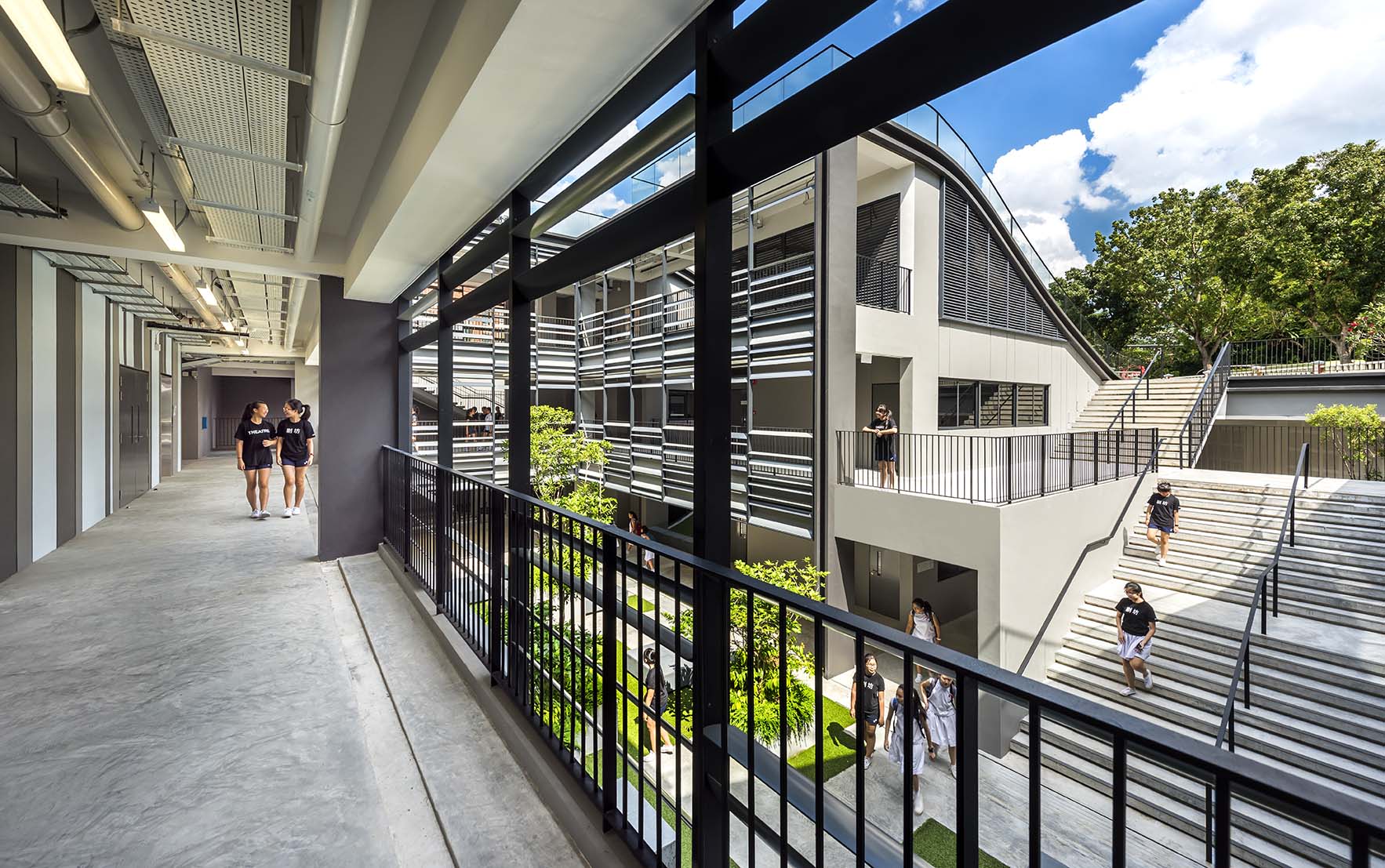

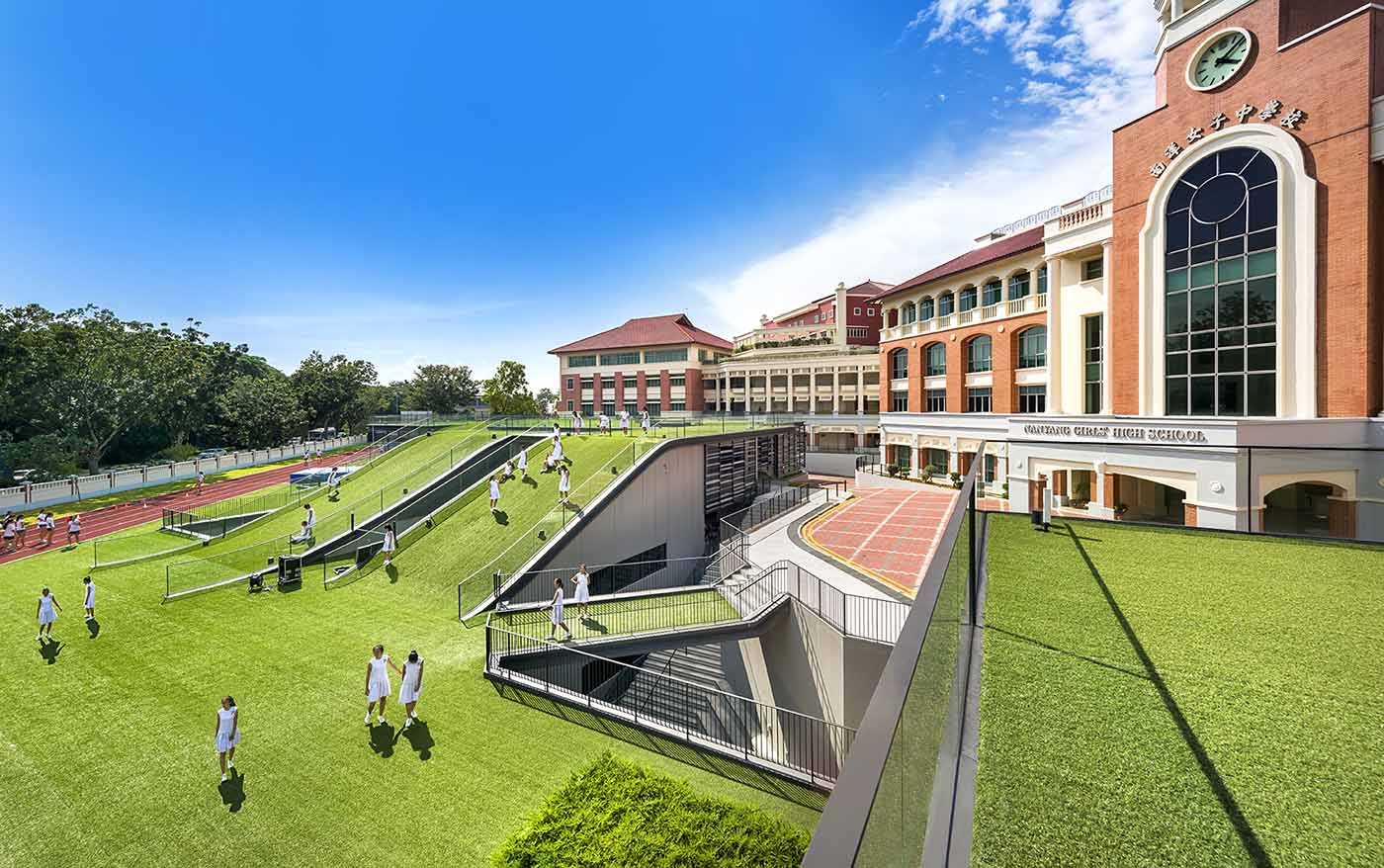
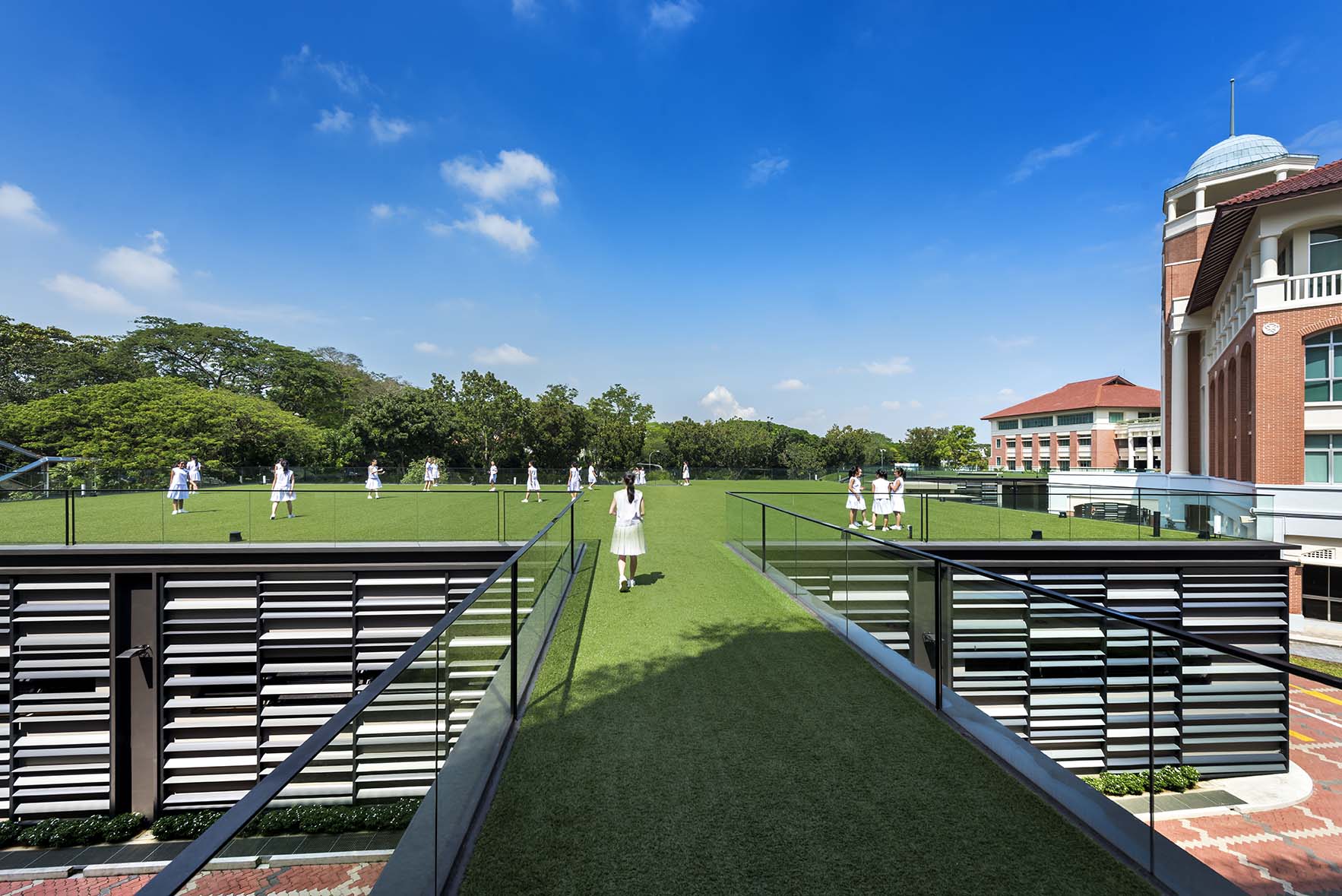
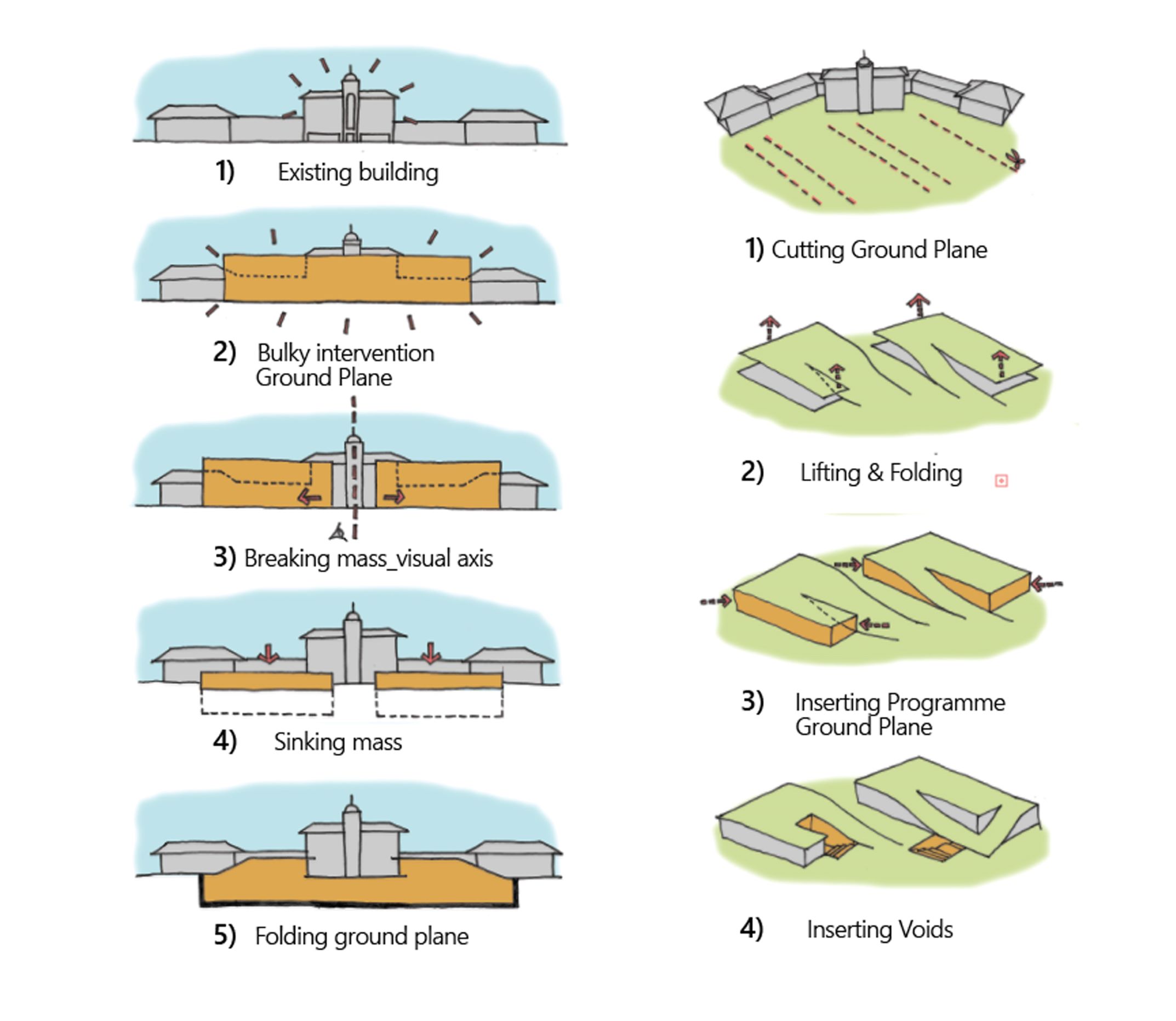
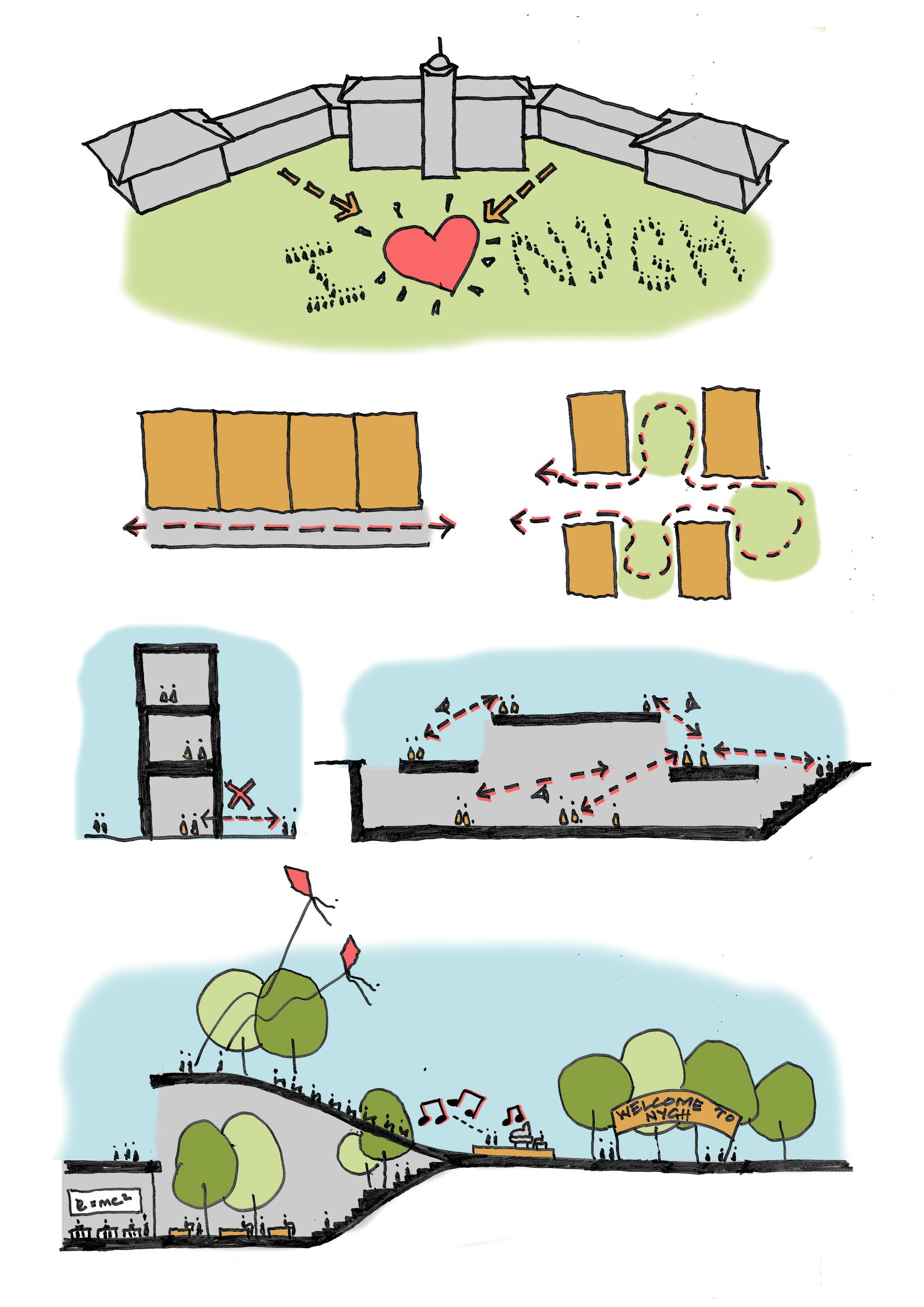
Nanyang Girls’ High School
Returning the Green
Nanyang Girls’ High School, one of Singapore’s top public schools, was founded in 1917, and moved campuses several times until 1999 where it settled in its present location along Dunearn Road, in the heart of Singapore.
The existing building, comprising of an iconic clock tower flanked by two blocks of colonial-influenced buildings that formalize in front of it a large green field and running track for students, has a landmark presence along the arterial roads.
With alterations or additions to existing buildings, there is always an interesting tension between the new and the old.
When considering the possible strategies to address the brief, it was apparent that the architectural approach should not be one that emulates the old, subservient to the legacy of the iconic institution. Neither should the existing school complex fade away, being simply the backdrop for the new extension.
What we opted for instead, was a synergistic relationship between the old and the new – a duet performing in sync and in harmony.
Project Year | Completed 2016
Location | 2 Linden Drive, Singapore
Photographer | Edward Hendricks
Expertise | Architecture
Awards
2017 Best of Year Winner for Large Primary/Secondary Education
2017 The American Architecture Prize, Honorable Mention
2018 INDE. Awards, The Learning Space Shortlist
Returning the Green
Nanyang Girls’ High School, one of Singapore’s top public schools, was founded in 1917, and moved campuses several times until 1999 where it settled in its present location along Dunearn Road, in the heart of Singapore.
The existing building, comprising of an iconic clock tower flanked by two blocks of colonial-influenced buildings that formalize in front of it a large green field and running track for students, has a landmark presence along the arterial roads.
With alterations or additions to existing buildings, there is always an interesting tension between the new and the old.
When considering the possible strategies to address the brief, it was apparent that the architectural approach should not be one that emulates the old, subservient to the legacy of the iconic institution. Neither should the existing school complex fade away, being simply the backdrop for the new extension.
What we opted for instead, was a synergistic relationship between the old and the new – a duet performing in sync and in harmony.